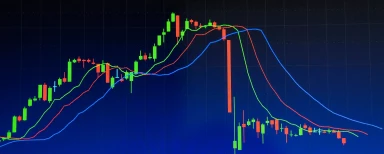-
The concept of hedging can be applied to a variety of investments like bonds, commodities, stocks, and currencies. Hedging typically involves the utilization of derivatives like futures, options, and swaps on the stock market.
Today, in this blog, we will uncover what is Hedging, understand hedging funds, sorts of hedging strategies, and more. But, before moving on, let's learn what hedging is.
What is Hedging?
An investment intended to counter or reduce the risk of adverse price movements in an asset or security is known as a hedge. Hedging is basically finished through derivative products to take a contrary situation in the hidden security or related security.
Basically, you really want to take an opposite situation in the underlying security or related security to decrease the risk of unfavorable price movement. Additionally, diversification is a form of hedging that reduces the likelihood of a negative price movement in a specific security.
Understanding Hedge Funds - A Quick Glimpse
A hedge fund that spotlights a cyclical area, may put a piece of its assets in a non-cyclical area like energy, meaning to utilize the profits of the non-cyclical stocks to offset any losses in cyclical stocks.
Hedge funds invest in derivatives like futures and options, leverage assets, and use riskier strategies. The allure of many hedge funds lies in the standing of their managers in the shut universe of hedge fund effective investing.
An investor in a hedge fund is usually viewed as a licensed financial backer, which requires a base degree of income or assets. Commonplace investors incorporate institutional investors, for instance, wealthy individuals, insurance companies, and pension funds.
Investments in hedge funds are considered illiquid as they frequently expect investors to save their money in the fund for something like one year, a period known as the lock-up period. Additionally, withdrawals may only occur at certain intervals, like quarterly or biannually.
Hedging as a Risk Management Tool
Buying or selling an investment to assist lower the risk of losing an existing position is known as hedging, a sophisticated risk management method.
Hedging is not a trading strategy commonly used among retail investors, and in cases where it is used, it is usually implemented at some point after the initial investment has been made. That is, you will not hedge a position at the beginning of buying or selling shares short.
How Do Hedge Funds Work?
The hedge fund manager pools money from different financial backers and institutional investors and puts it in an aggressive portfolio. It is overseen through such techniques that assist to accomplish the objective of the predetermined return no matter what the change in the money market or fluctuations in share value that saves from any loss of investments.
Most Common Types of Hedge Funds
There are several types of hedge funds exist, tailored to specific risk appetites and market conditions. Some of them are as follows:
- Equity hedge funds put resources into worldwide or domestic stocks that offer assurance against equity market downturns by selling overvalued stocks or stock indices.
- Relative value hedge funds produce better returns by utilizing the value distinctions or spread inefficiencies of related securities.
- Global macro hedge funds influence macroeconomic elements and monetary conditions like genuine trade rates and inflation rates to profit from market swings.
- Companies that respond to a variety of demands, such as change on the board of directors, cost-cutting, and asset restructuring attract investments from activist hedge funds.
Key Characteristics & Features of Hedge Funds

Here, in this section, we will disclose the top features of Hedge funds. Let’s have a quick look:
1. Positive Returns
Many hedge funds are able to take advantage of market trends and make money whether the market is in a bullish or bearish condition. Typically, these hedge funds serve as an enabler rather than an active buyer in the transaction.
2. Better Diversification
Hedge funds broaden an investment portfolio's overall flexibility, which directly affects the diversification strategy. Better diversity lowers a project's cost and risk.
3. Wide Choice
There are many different types of hedge funds that can be used to lower risks or boost profits, some of which are frequently uncorrelated with one another. For practically every sort of investment that can be employed in a share-market strategy, hedge funds are available.
4. Diminish the Overall Risk
To reduce the total risk of a portfolio of investments, hedge funds are deployed. Hedge funds can be utilized to provide the required level of returns, which helps to lower total portfolio risks by lowering volatility and raising returns.
5. Ideal Investment
Hedge funds are a great investment option for those who don't have a strict entry or exit strategy because they don't depend on the time of entry or leave. Individual investors who lack an optimal investment strategy will find this to be especially beneficial.
6. High Returns
It has been established that hedge funds provide greater returns and lower risk, which can support investors' ultimate goal of expanding their portfolios. Fund managers frequently utilize hedge funds to lower an investment project's overall risk.
Hedging in Trading
Hedging is the acquisition of one resource determined to decrease the risk of loss from another asset. In finance, hedging is a risk management technique that spotlights minimizing and eliminating the risk of uncertainty.
It helps with restricting losses that might happen because of unforeseeable variations in the cost of the investment. It is a typical strategy utilized by financial exchange members to protect their assets from losses.
Significance of Hedging in Reducing Risk
Here, we are going to explain the pros of hedging in trading. Let’s take a closer look:
- Hedging helps in securing profits and limiting losses.
- The technique can be utilized to survive difficult market periods.
- It gives you protection against changes, for example, interest rates, inflation, currency exchange rates, and much more.
- It can be a good way to add a variety of asset classes to your trading portfolio.
- Contributes to the improvement of financial market liquidity.
Hedging Example: Testing a CFD Hedging Strategy
We should explore how to use financial hedging in the stock market as a feature of a CFD trading strategy for an investor that as of now claims company stock from somewhere else.
The way investors react to potential volatility is determined by their particular circumstances and approach. Hedging might be an option for risk-averse investors, concentrated stockholders, and active investors.
Hedging in Forex Trading - What is It & How Do You Use it?
Forex hedging involves strategically opening additional positions to safeguard against adverse movements in the foreign exchange market.
Hedging itself is the most common way of trading financial instruments to offset or adjust your ongoing positions, and in doing so reduce the risk of your exposure.
Additionally, the majority of traders and investors will try to reduce the exposure risk, and hedging is just one strategy that can be used.
What Are the Benefits of Hedging in Forex?

Check out the benefits of hedging in Forex listed below:
Portfolio Diversification
Hedging aids in portfolio diversification for traders by offsetting risks in various currency pairs. This diversification lessens the portfolio's total exposure to a particular market or currency.
Risk Mitigation
Forex hedging gives traders the ability to protect their positions from unfavorable market conditions, so they lower the risk of suffering losses.
Enhanced Flexibility
Trading professionals can react to changing market conditions by using hedging. Depending on the market condition, they also can change their positions or hedge different currency pairs.
Increased Trading Opportunities
By hedging, traders can explore more trading opportunities without worrying about taking on too much risk. Also, they can take benefit from both bearish and bullish market trends.
Capital Preservation
Forex hedging is essential for capital preservation since it successfully reduces the effects of market swings. A vital layer of security is provided by this risk management method, guarding against unexpected market downturns.
Most Common Techniques Used in Forex Hedging
Forex hedging offers various techniques to reduce trading risks. Forward contracts are known as a prevalent technique under forex hedging techniques. Its exchange rates are steady for upcoming transactions.
By permitting but not requiring the exchange of currencies at set rates, options offer flexibility. By exchanging principle and interest payments in several currencies, currency swaps lower volatility. A different strategy uses correlated currency pairs to counteract potential losses.
Risk exposure is decreased by hedging using money market instruments like short-term securities. Utilizing these tools wisely enables businesses and investors to protect themselves from potential financial volatility and traverse the complex world of currency volatility.
How Can You Hedge in Forex?
Hedging in forex trading includes utilizing strategies to limit possible risks and protect against adverse market movements. Traders use various techniques to hedge their forex positions effectively. Using currency pairs to offset exposure is a common strategy.
For example, if holding a long position in one currency, taking a short position in a connected currency can relieve losses if the primary cash depreciates. Options and futures contracts can likewise be used to hedge forex positions, offering the option to trade currencies at predetermined prices. In any case, hedging isn't without risk and requires a thorough understanding of market elements and cautious thought of the chosen strategy.
Risk & Considerations in Forex Hedging
As per the expert’s advice, in today’s arena of forex hedging is crucial to approach the process with a clear understanding of the risks involved and thoughtful consideration. Here, we have mentioned some of the risks and considerations:
Regulatory Considerations
Regulations governing the currency markets can differ depending on the jurisdiction. Make sure the hedging strategies you select abide by all applicable laws and rules.
Market Volatility
The swiftness and unpredictability of the Forex market's movements are well recognized. Hedging can offer protection, but it's important to keep in mind that no plan can completely eliminate market risks.
Hedging Costs
Costs associated with hedgings, such as spreads, charges, or transaction fees, are frequent. It is wise to weigh these costs against the advantages of lowering risk because they can reduce prospective earnings.
Over-hedge
While reducing risk is the main objective, overhedging can occasionally produce modest benefits when the market is trending in your favor. Make sure your strategy is balanced and appropriate for your level of risk-taking.
Choosing a Strategy
There are numerous hedging techniques available, including swaps, options, and futures. Each offers a unique set of benefits and drawbacks. Understanding your objectives and the state of the market is crucial to selecting the best strategy.
Types of Hedging Strategies

Hedging strategies are different and vary depending on the asset being hedged, the investor’s risk tolerance, and economic conditions. Here, we have mentioned some of the most common types of hedging strategies:
Currency Hedging
Investors can involve currency hedging strategies to safeguard against changes in foreign exchange rates. This consists of using financial instruments, for instance, forward contracts, options contracts, or futures contracts to secure a particular exchange rate.
Pros of Using Currency Hedging Strategy
Here, we are going to mention the pros of using a currency hedging strategy:
Stability
For companies that deal in different currencies, hedging can offer stability and predictability. It lessens how currency changes affect cash flows and financial statements.
Risk Management
Currency hedging can benefit investors and company owners by lowering exposure to forex volatility. As a result, controlling financial risk and preventing significant losses from unfavorable currency swings is made simple.
Flexibility
Investors and companies can use currency hedging to lock in exchange rates and gradually reduce their currency exposure. As a result, it gives them more control and flexibility over their financial situations.
Cons of Using Currency Hedging Strategy
Here, we are going to state the cons of using a currency hedging strategy:
Short-term focus
Some hedging techniques concentrate on the short term and might not offer enough security from long-term currency volatility.
Inefficient Market
The cost of hedging may be significant, and the currency market is frequently inefficient. Due to this, determining the cost of hedging and making decisions can be challenging.
Missed Opportunities
Hedging may result in missed investment opportunities and reduce gains from favorable currency moves.
Futures Hedging
Futures contracts are agreements to trade an asset sometimes not too far off and at a predetermined cost. Futures contracts can be used by investors as a hedge against future asset price fluctuations.
For instance, if an investor possesses a stock and fears a drop in its worth, they could sell a futures contract at the current price to lock the current value and safeguard against a decline in the future.
Pros of Using Futures Hedging Strategy
Here, we are going to discuss the pros of using a futures hedging strategy:
Opens the Markets to Investors
Investors that can tolerate risk will find futures contracts handy. Investors have the opportunity to participate in marketplaces they otherwise would not have.
Stable Margin Requirements
The majority of commodities and currencies have well-established margin requirements in the futures market. Thus, a trader is aware of the appropriate margin to provide for a deal.
High Liquidity
The majority of futures markets have considerable liquidity, particularly for commodities, indices, and common currencies. This enables dealers to come and go from the market as they want.
Simple Pricing
Futures pricing is much simpler to comprehend than the exceedingly complex Black-Scholes Model-based options pricing. It is typically based on the cost-of-carry concept, where the futures price is calculated by multiplying the asset's spot price by the cost of carrying.
Cons of Using Futures Hedging Strategy
Here, we are going to mention the cons of using a futures hedging strategy:
Leverage Issues
Futures prices may fluctuate quickly under conditions of high leverage. Prices can fluctuate every day or even every few minutes.
No Control Over Future Events
You don't have any control over future events, which is a common disadvantage of futures trading investments. The predicted demand-supply balance might be severely upset by natural disasters, unforeseen weather patterns, political issues, etc.
Expiration Dates
Future contracts have a specific end date. As the expiration date approaches, the negotiated prices for the given assets may become less appealing. A futures contract may therefore infrequently expire as a worthless investment.
Options Hedging
Options are getting that give the buyers the right, however not the commitment, to trade a resource at a predetermined price on or before a particular date. Investors can utilize options contracts to hedge against losses or to restrict potential gains.
A put option, for instance, can be purchased at a predetermined strike price by an investor who owns stock and wishes to protect themselves against a decline in its value. If the stock price drops under the strike value, the options can be exercised, permitting the investor to sell the stock at the higher strike price.
Pros of Using Options Hedging Strategy
Here are some pros of using an options hedging strategy:
Flexibility
Options offer a variety of techniques that can be customized to meet the expectations of the market and particular risk profiles. To design unique hedging strategies, investors can select from a range of options contracts, including calls, puts, spreads, and combinations.
Cost Efficiency
Options hedging can be more affordable than other risk management techniques like asset sales or the use of futures contracts. Options contracts often call for a modest initial outlay, allowing investors to safeguard their portfolios without committing a substantial sum of money.
Tailored Strategies
Options give investors the freedom to design intricate investing strategies that fit their unique investment objectives and risk appetite. Investors are able to adapt to shifting market conditions thanks to this flexibility.
Cons of Using Options Hedging Strategy
Here are some cons of using an options hedging strategy:
Time Decay
Options contracts have a finite lifespan, and time decay causes them to lose value over time. Investors must therefore be aware of the timing of their hedges and modify their positions as necessary.
Complexity
Options can be tricky to grasp because of things like strike prices, expiration dates, implied volatility, and other elements. Options methods that are incorrectly applied may have unforeseen effects.
Market Timing
Accurate market timing, forecasting price movements, and volatility variations are essential for effective options hedging. Ineffective hedges or losses may result from incorrect predictions.
Regulatory Considerations
Trading in options is subject to legal restrictions and may not be appropriate for all investors. It's crucial to comprehend and abide by these rules.
Pair Trading Hedging
Pair trading includes taking long and short positions in two profoundly corresponding securities all the while. In order to profit from a difference in price between two securities and reduce overall market risk, this strategy is used.
Pros of Using Pair Trading Hedging Strategy
Here, we have mentioned the pros of using a pair-trading hedging strategy.
Profit Earning
It helps the trader in making money regardless of the state of the market, i.e., the pair trading technique aids the trader in making money whether the market is rising, falling, swinging, and much more.
Hedging
Pairs trading offers the best protection for the trader, which is not a benefit in regular trading. With this technique, the trader limits the likelihood of loss by selling overpriced stocks and buying undervalued securities.
Able to Mitigate Potential Losses and Risks
Investors can profit when a pair's trading strategy performs as expected by traders, and this also helps to limit any potential losses that might arise.
Additionally, since the strategy of the pairs involves trading in two securities, it may be possible for the other to absorb losses as a result of the underperformance of one of the assets.
Cons of Using Pair Trading Hedging Strategy
Here, we have mentioned the cons of using a pair-trading hedging strategy.
High Commission
Due to the large commissions involved with pair trading, several traders strongly advise against it. When trading a single pair, a trader may occasionally be compelled to pay a commission that is twice the usual commission for a routine trade.
Price Filling
When initiating deals in pair trading, there is a considerable danger of stock orders failing to hit the desired price because profits in pairs trading entail relying on margins that are lower than necessary and transactions are conducted in big volumes. Due to the huge amount of transactions, even a little fluctuation in the security's purchasing or selling price might have a big impact.
Reliance of The High Statistical Correlation
Securities with a high statistical correlation are used in pair trading. The majority of traders need a correlation of at least 0.80, which is challenging to calculate.
Forward Contract Hedging
Forward contracts are similar to futures contracts as they are customized agreements between two parties. They involve buying or selling an asset at a predetermined price and at a time in the future. Investors can use forward contracts to secure a price for an asset and safeguard against future price fluctuations.
These are only a couple of the many hedging strategies accessible to investors. Every approach enjoys its benefits and hindrances, and investors should carefully think about their investment objectives, market conditions, and risk tolerance prior to picking a system.
Pros of Using a Forward Contract Hedging Strategy
- It provides a price guarantee and enables the company to manage risk and supply.
- They can be used to reduce risks associated with interest rates and currencies.
- Contracts are adaptable and can be tailored to a particular situation.
- It can support cash flow forecasting.
- Planning for investments can be helpful because businesses may elect to lock in cash and generate income before the funds are required for the contract.
Cons of Using a Forward Contract Hedging Strategy
- Of course, prices are subject to change. You can find yourself paying more than the going rate in the future if the price or exchange rate changes in your disfavor.
- Compared to a regular contract, a forward contract is more complicated.
- Longer time periods carry a higher chance of default or default.
Common Factors to Consider When Choosing a Hedging Strategy
Below are the common factors you need to consider when you will decide to choose any hedging strategy listed above. So, check out those factors now:
Risk Exposure
Assess risks that your company is exposed to, like those related to currency changes or the volatility of commodities prices. For the best possible loss mitigation, pick a hedging strategy that fits your risk profile.
Cost-Efficiency
Consider the expenses related to various hedging strategies, such as transaction costs and margin requirements. In order to prevent your financial resources from being too taxed by the method you choose, try to strike a balance between cost and efficacy.
Flexibility
Choose a hedging strategy that permits adjustments in response to shifting market conditions. A flexible strategy guarantees that your company remains adaptable and responsive in dynamic marketplaces, increasing the overall success of risk management.
Suggested read: How does forex trading works
Final Thoughts
Overall, a hedge fund is a collective investment owned by numerous investors that is privately pooled. A hedge fund is managed by a hedge fund manager, but since there is no one in charge of it, it is an unregulated alternative investment fund.
The risky nature, minimum investment cap, and illiquid capital withdrawal are some key features of a hedge fund as listed above. All things considered, a hedge fund is an extremely successful and tax-exempt investment fund.
Finally, in order to make sizable returns, a hedge fund always searches for both conventional and non-conventional assets to invest in. So, if you are planning to invest in hedge funds, then initially you should connect with a professional for the same. We at CapitalXtend, are always here to assist you. Get in touch with our experts now!
 01. Currency Hedging
01. Currency Hedging
















































